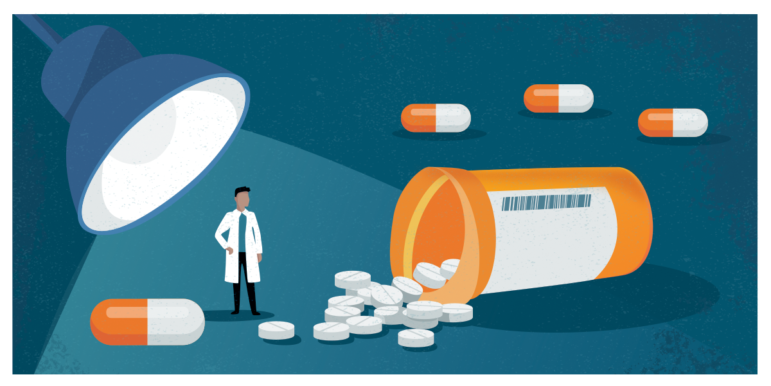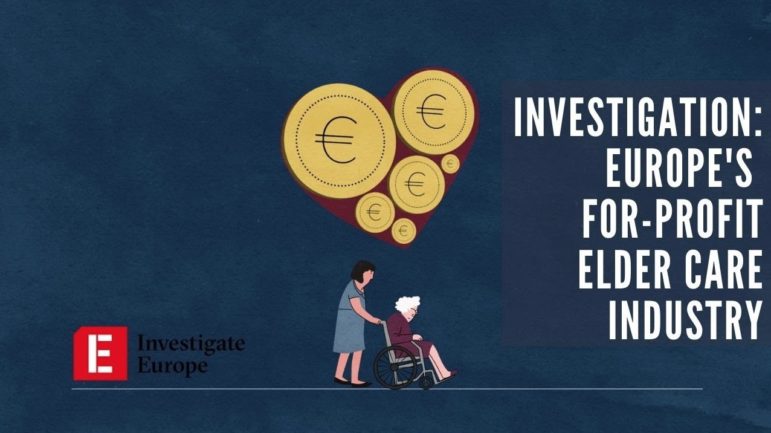

Image: Shutterstock
Reading 50,000 Records to Expose a Hospital Bankrupting Poor Patients
Read this article in
When Giacomo Bologna was working on his first freelance story, he reached out to the Fund for Investigative Journalism (FIJ) for help. He had been a reporter at the Clarion-Ledger, the daily newspaper in Jackson, Mississippi, in the southern United States for several years – but now he was on his own, pursuing an investigation that he had wanted to do years earlier but couldn’t.
With a grant from the FIJ to cover his gas mileage, the cost of copying records, and his time, Bologna set up shop in a small room on the third floor of a courthouse in Mississippi and started reviewing paper files to trace a large nonprofit hospital’s practice of aggressively pursuing payment from thousands of poor patients, including many who should have qualified for charity care.
His investigation of St. Dominic Hospital was published by the Mississippi Center for Investigative Reporting. The FIJ’s executive director Eric Ferrero spoke to Bologna about how he reported the story, his advice for other journalists, and the unique role of nonprofit investigative outlets.
Eric Ferrero (FIJ): I remember back in May, when our board was still reviewing your grant application, you wrote to me on the day that you discovered that a lot of these cases are handled in “justice court,” a kind of small-claims court system in Mississippi where judges aren’t required to have law degrees and records aren’t digitized. You said it was an “aha moment” because you realized there were many more cases than previously known – but you described the index of case files as “something out of that 1980s movie ‘War Games.’” How much material did you have to dig through for this story, and how did you approach it?
Giacomo Bologna: We had to sift through more than 50,000 paper court records in a stuffy records room in the courthouse to build a usable spreadsheet of data. It was tricky. The justice court clerk is able to compile a list of all the cases filed by a certain plaintiff. But the debt collectors used by St. Dominic also worked on behalf of dozens of other companies, mostly in healthcare. Each time we saw a lawsuit filed by one of these debt collectors, we had to actually read the complaint and determine where the debt originated. I got really fast at this by the end. I did much of the work on my own, but my girlfriend Alissa Zhu visited for a week and graciously spent that time going through court records with me. I also had a student intern Macy Weaver who worked with me for a few days going through court records.
EF: There were clearly some unique challenges because of how Mississippi maintains records, but what advice do you have for other investigative reporters who are tackling really complicated stories, especially as freelancers?
GB: It was really important to have guideposts. For me, that meant similar investigative pieces in other states. When I was feeling bogged down or confused or frustrated, I would reread the investigations by MLK50 in Memphis, Kaiser Health News in Virginia, and a handful of others. Seeing how they did their investigations, what angles they took, what records they requested, what interviews they did — that really kept me going. I could see that I was on the right path.
EF: The personal stories in your report really drive home how these practices affect real families, often for years. How did you identify the people you profiled, and what advice do you have for other journalists about vetting and verifying personal stories while gaining people’s trust?
GB: This was definitely the hardest part of the story. I made a lot of phone calls, wrote a lot of emails, and knocked on a lot of doors without getting much response. I have three personal stories throughout the series — Patty, Linda, and Tawana. I found each woman differently and had documentation to back up each account. Some of the medical debt lawsuits I reviewed were dismissed because the defendant had declared bankruptcy. I started keeping track of some of those defendants’ names. I took that list to the federal courthouse and read through the bankruptcy filings to see if medical debt played a role. I saw that Patty’s medical debt clearly played a role in her bankruptcy filings. I called her up and left a voicemail, but I was nervous. A lot of people had not been returning my calls. After all, who wants to call back a random person asking about their medical debt?

Read GIJN’s Guide to Investigating Healthcare. Illustration: Marcelle Louw for GIJN
So I went to Patty’s home in a trailer park on the other side of town. She wasn’t home, but a neighbor told me she worked right around the corner. I went to where she worked as a receptionist and made the connection. In the end, I reviewed her bankruptcy filings, her medical debt lawsuit, the lawsuit she filed related to the car crash that caused her medical debt, and the police records about that crash. I found Linda because she wrote a passionate letter to the judge about her medical debt case. She had no idea the letter was preserved in her case file or that anyone had ever read it. I tried calling and got no response. I knocked at her door and got no response. But a few days later, she called me because I had left a note at her door. I had the medical debt lawsuit filed against her. She provided me a copy of her pay stub and showed me some of the medical bills she’s continuing to pay.
For Tawana, she filed a lawsuit against one of the debt collectors. As part of my investigation, I looked for every lawsuit in state and federal court that had been filed against St. Dominic and its debt collectors. I contacted her attorney, and he put me in touch with Tawana. I had the entire court record from her lawsuit to check against her story.
EF: In your grant proposal, you said that Wendi Thomas’ reporting at MLK50 a couple of years ago inspired you to look at nonprofit hospitals’ practices in Mississippi, but you were then a reporter at the Jackson Clarion-Ledger and weren’t able to do the story. What do you think it says about the industry that both of these investigations were done by new nonprofit outlets, and what do you see the role of nonprofit investigative outlets being in the future?
GB: This is a great question. A good friend once told me a joke I will never forget: What’s the difference between a reporter and an investigative reporter? Time. Local news is in a tough spot. Communities need and deserve daily news that is informed, has context, and pushes back on what spokespeople and government officials are saying. We also need deep, investigative work that can change how institutions function and reveal inequities. Nonprofit newsrooms will keep doing these long-term investigative efforts. What I worry about is the day-to-day grind that newspapers are traditionally great at. I think more collaboration — not competitiveness — is needed among newsrooms, and nonprofit outlets that allow their work to be republished for free is a great way to foster collaboration.
EF: This was your first story with a freelancer, and you asked to be matched with a seasoned journalist through our mentoring program (which is supported with a grant from the Scripps Howard Foundation), particularly someone with experience in finance and the health care field. Who was your mentor, and what was that experience like?
GB: Ron Campbell was great. [Campbell is the Data Editor for NBC Owned Television Stations and previously reported for daily newspapers in California.] It was clear from our first conversation that he had read, worked on, and edited stories with similar players and dynamics. He had some great ideas on people to contact and records to look into. He was especially helpful at the end of my reporting. My first draft of the story was way too long. When you’ve been reporting a single story for months, it can be hard to know what is interesting or boring to the reader. He gave me some advice that helped me cut the story down to size and make it much more readable. When you’re working on a project like this, it helps so much just to have somebody knowledgeable like Ron to talk through things and hear what questions they have about the project.
This Q+A was originally published by the Fund for Investigative Journalism, and is republished here with permission. You can read the original here, or the story by Giacomo Bologna published by the Mississippi Center for Investigative Reporting here.
Editor’s note: A spokesperson for St. Dominic — which is under relatively new ownership — told Bologna in response to his story: “To maintain our commitment to the community and continue important healthcare services to those in need, we have a responsibility to be financially sustainable, just as all organizations must. While we do our best to operate as efficiently as possible, we also need every individual to do their part in trying their best to pay their healthcare bill.”
Additional Resources
GIJN Guide: Investigating Health and Medicine
How Nonprofit Newsrooms Pioneered In-Depth Healthcare Coverage Before the Pandemic
GIJN on YouTube: How to Investigate Health and Medicine
 The Fund for Investigative Journalism, a GIJN member, is a nonprofit based in Washington, D.C., which supports unbiased, nonpartisan journalism that has an impact.
The Fund for Investigative Journalism, a GIJN member, is a nonprofit based in Washington, D.C., which supports unbiased, nonpartisan journalism that has an impact.









